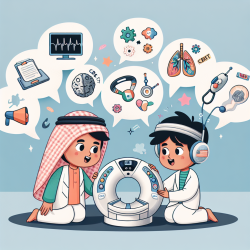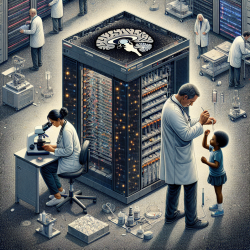As practitioners dedicated to the well-being of children, it's essential to stay updated on the latest diagnostic tools for detecting dentomaxillofacial abnormalities. The recent narrative review titled "A Narrative Review on Current Diagnostic Imaging Tools for Dentomaxillofacial Abnormalities in Children" offers invaluable insights into various imaging modalities. This blog aims to distill key findings from the review and provide actionable steps to enhance your diagnostic skills.
Understanding Diagnostic Tools
The review discusses several diagnostic tools, including:
- Cone Beam Computed Tomography (CBCT): Often the first line of imaging, CBCT uses a conic or pyramidal beam of X-rays and a flat panel detector. It is ideal for hard tissue imaging but less effective for soft tissues.
- Multi-Detector Row CT (MDCT): This tool offers superior characterization of soft tissues and allows the use of contrast agents. However, it is costly and space-consuming.
- Magnetic Resonance Imaging (MRI): Free of radiation, MRI is excellent for soft tissue contrast but comes with a higher cost.
- Ultrasonography (USG): Gaining popularity due to its lack of radiation exposure, USG is cost-effective and efficient for soft tissue imaging.
- Positron Emission Tomography (PET/CT): Offers high sensitivity and specificity, especially when combined with CT, but is expensive.
Actionable Steps for Practitioners
To improve your diagnostic skills, consider the following steps:
- Stay Updated: Regularly review the latest research and updates on diagnostic tools. The landscape of diagnostic imaging is continually evolving, and staying informed is crucial.
- Training and Workshops: Participate in training sessions and workshops that focus on the latest imaging technologies. Hands-on experience can significantly enhance your diagnostic capabilities.
- Collaborate: Work closely with radiologists and other specialists to interpret imaging results accurately. Collaboration can provide new insights and improve diagnostic accuracy.
- Patient-Centric Approach: Always consider the socio-economic background of your patients. Choose the most cost-effective and least invasive diagnostic tool whenever possible.
Encouraging Further Research
The review highlights the need for further research, particularly in the application of newer technologies like HyperionX9 scanners and 18F-FDG PET/CT. As practitioners, you can contribute to this body of knowledge by documenting your findings and sharing them with the broader medical community.
To read the original research paper, please follow this link: A Narrative Review on Current Diagnostic Imaging Tools for Dentomaxillofacial Abnormalities in Children.










